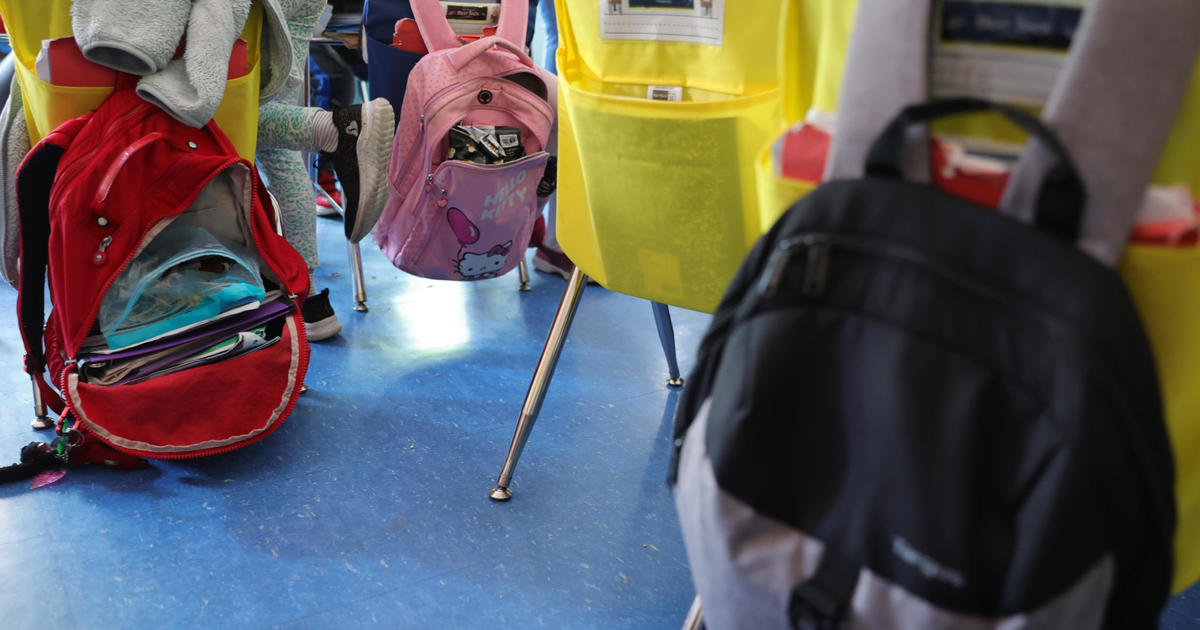Federal Report: Sandy Warnings Were Confusing Despite Accurate Forecasts
NEW YORK (CBSNewYork/AP) - Federal weather forecasts for Superstorm Sandy were exceptionally accurate last fall, but the warnings themselves were confusing, an internal review found.
The gigantic October storm lost tropical characteristics hours before landfall in New Jersey, so the National Oceanic and Atmospheric Administration stopped calling it a hurricane. Instead it shifted focus to flooding and high wind warnings and moved responsibility from the National Hurricane Center in Miami to local weather offices.
NOAA's self-assessment said that led to confusion by the public and the media, a complaint made by independent meteorologists.
The 66-page report uses the word ``confusion'' 88 times.
Federal Report: Sandy Warnings Were Confusing
"People in New York don't expect anything like that, you know. It's a once in a lifetime storm so I guess nobody could really be prepared for it," one downtown worker told WCBS 880 reporter Paul Murnane on Thursday. He lived in Florida and said there are lessons you'll only learn once.
Confusion stemmed from a ``lack of flexibility'' about what Sandy was when it morphed from a hurricane to a post-tropical storm. That is essentially a hurricane that no longer gets its energy from warm water and loses its eye. Coastal residents and the news media misinterpreted Sandy's potential impacts, the report said.
The report recommended that future hurricane warnings should continue even when a storm is downgraded and they should come from the hurricane center. That's a change NOAA adopted last month.
The way around all this is to emphasize what a storm does, more than what to call it, said report author Peyton Robertson, who directs NOAA's Chesapeake Bay office.
``Just saying a hurricane is coming doesn't tell people what they're supposed to do,'' Robertson said.
The report says the biggest problem was warning of the massive storm surge. Nearly 4 out of 5 coastal residents surveyed said Sandy's surge was higher than they expected.
Nine in ten coastal residents said they knew it was a dangerous storm.
New York City's emergency management office ``was confused about the storm surge forecast, what and where the impacts would be and how high the water would rise,'' the report said, adding that it took a phone call from the National Hurricane Center to tell them how serious it was. ``This apparent communication breakdown may have delayed critical decision making about evacuations and led to the potentially confusing messaging to the public.''
Robertson said people didn't understand terms like ``mean high water,'' nor that coastal flooding can go far inland.
Even so, Robertson said surveys did show that people knew how serious Sandy was.
The report highlighted a Philadelphia weather service office, where a meteorologist sent out ``a personal plea'' for people to take the storm seriously that included ``if you think the storm is over-hyped and exaggerated, please err on the side of caution. You can call me up on Friday (contact information is at the end of this briefing) and yell at me all you want.''
MIT tropical meteorologist Kerry Emanuel, who had no role in writing the report, praised the weather service's forecast as ``very good,'' but said the agency ``had serious problems communicating the risk to those who needed to know.''
(TM and © Copyright 2013 CBS Radio Inc. and its relevant subsidiaries. CBS RADIO and EYE Logo TM and Copyright 2013 CBS Broadcasting Inc. Used under license. All Rights Reserved. This material may not be published, broadcast, rewritten, or redistributed. The Associated Press contributed to this report.)
You May Also Be Interested In These Stories



